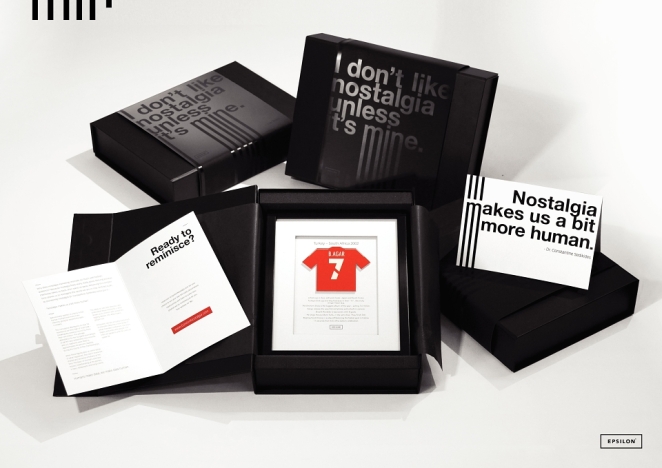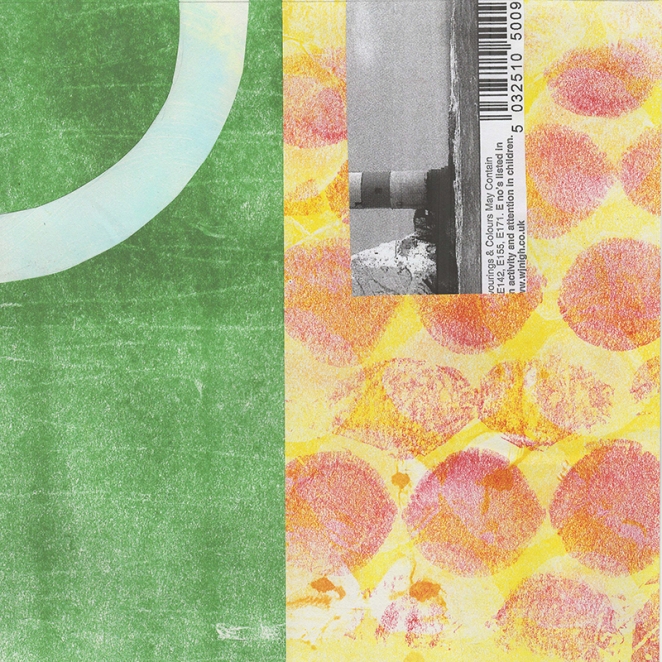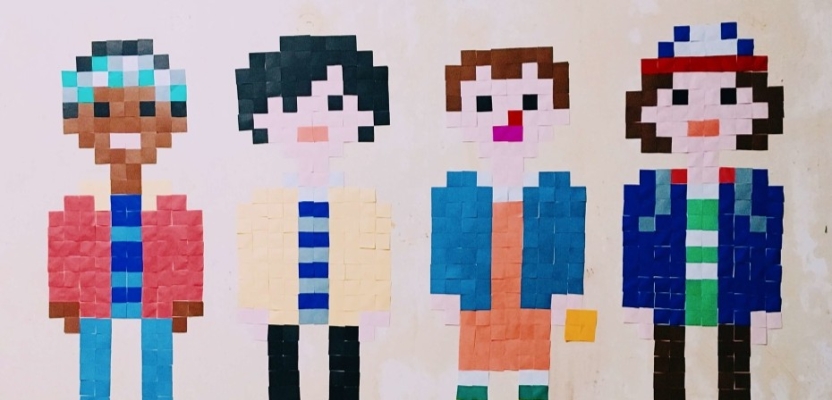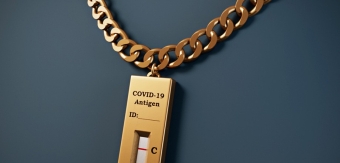Nostalgia is an increasingly powerful tool in world that seems to be getting darker by the day. For advertisers, it offers a unique and compelling way to forge emotional connections with audiences and today, we’re lucky enough to hear from three agency experts on how brands are tapping into the collective memory of their audience, offering a sense of familiarity and comfort in a rapidly changing world.
Sally Tarbit, Director and Brand Development lead at strategic brand agency The Team
It’s interesting to first think about the type of emotional connection brands want to make with their audiences. I would say that a sense of safety and reassurance is at the top of the pile as a basic human need right now (and always, to be fair!). Psychological safety, cyber safety, personal safety – the list goes on. Nostalgia can help to give us a feeling of safety, reassurance, and comfort. So, it has an inherent value there.
But I’d argue there’s also a need for joy and happiness, to feel good and escape the burden of some of today’s economic challenges. And looking back means that we can cherry-pick moments that do just this. Seemingly free of baggage (even though that probably wasn’t the case), we can use these moments to create the right feeling at the right time – the classic ‘rose-tinted glasses’ effect.

Sarah McGrath
An effective and contemporary way to use nostalgia is to channel the signs, symbols, and feelings of comfort, appeal, or familiarity of things past, and then create something new and relevant for today with that. Not just take something old and tweak it. There’s often nostalgia for the simplicity of things past (when this may not have really been the case). So, I think this is something very resonant for today, when cognitive overload is a very real thing.
Music is often one of the main ways nostalgia surfaces for brands, especially above the line. Music from any era can be very powerful; it’s a form of storytelling, after all, and evokes a range of emotional responses. I think it often tells the story of how, despite what happens around us, life is reassuringly consistent – daily struggles, relationships, loves lived and lost – which evokes a sense of incredible resilience too.
Doug Wilson Executive Creative Director @ Monotype
Recently, there has been a lot of buzz around revamps of nostalgic toys, games, and programs. Big Screen adaptations of Monopoly (with Margot Robbie) and Uno (with Lil Yachty) are both scheduled, as well as a live action version of Hot Wheels. In the consumer tech world, Apple’s app store has recently approved emulators, bringing classic video game experiences to the iPhone. PBS has announced a retro channel with programs from the ’80s and ’90s.
While the content is throw-back inspired, we’ll be consuming it via current technology. Most of us will watch associated videos with closed captions. All of the new branded digital experiences will rely heavily on an unexpected “make it or break it” element - Typography.
One thing many of these projects have in common (Monopoly, Uno, Barbie, Hot Wheels, Gameboy, Playstation, Nintendo) is that their recognizability is tied to a single piece of text, in specific fonts and colours that communicate the entire brand.

Sara Truckel
Monotype is the international leader in type technology, and Doug Wilson, Executive Creative Director, has this to share regarding the emotional impact of nostalgic typography:
“Nostalgia is a powerful thing. All I need to hear are the first few notes of a song that I listened to on-repeat at the age of 16 and I’m instantly transported back in time. In fact, I would venture to say that nostalgia is time travel — however brief.
When consumer packaged goods companies use “throw-back” or nostalgic branding and artwork, they are pulling at more than just your current consumer need — they are saying “Hey! Remember me from your childhood? Remember the soap that your grandparents used? Remember how fun riding a bike was as a kid? Remember when your parents wouldn’t let you buy that sugary cereal? Well, YOU’RE AN ADULT NOW and you can buy whatever you want!”
And these approaches can be extremely tempting. As with fashion, typography is circular. What was once out of fashion now is back because a new generation of designers and consumers are seeing it for the first time. Fonts that were popular in the 1970s and ’80s have been coming back in style and used extremely effectively to pull at your nostalgia and give a sense of what a consumer can expect. “Stranger Things” anyone?”
Jonathan Izzard, Strategy Director @ Wonder
‘Retro’ is a word with particular resonance to me.
As a child of the ‘80s, I grew up fascinated by video games. Whether it was the ZX Spectrum my dad brought home from work or the Atari 2600 my sister got for Christmas, microcomputers and consoles became an itch I couldn’t help but scratch. As a kid, this was a hobby that was sustained by selling, swapping and patiently saving, with owning more than one games system a mere pipe dream.
With adulthood - and, crucially, an income - it became much more possible to indulge in this interest. Indeed, my generation is perhaps the critical cohort behind the rise in the retro gaming industry we see today; the ability to finally obtain that long lusted-after piece of hardware - whether to be played or simply displayed - helping both satisfy and stimulate nostalgia.
It’s that longing - literally “the pain of homecoming” - that marketers can’t help but prod at and explore, in the hopes of connecting with their audiences at a more primal, instinctive and emotional level.
Thanks for (ruining) the memory
While the 2024 Super Bowl is firmly in the collective rearview, its position as the benchmark for commercial event broadcasting is undoubted. And here, once again, we see adland unable to restrain itself from dropping nostalgia bombs across the TV networks.
The trouble is, the result is often a creative mixed bag, with the default approach to creating ‘event television’ being brands’ power to commercialise the nostalgically sacrosanct.
Whether it's riffing on or ripping off the classics - Ferris Bueller, The Big Lebowski, Groundhog Day, The Shining, Home Alone or Breaking Bad - the results aren’t necessarily always terrible. And yet, in most cases the advice of the great Don Draper that nostalgia is “delicate, but potent” is ignored - with brands tending towards a more brute-force approach to beloved characters and story beats.
Sure, I’m still referencing some of these commercials, so they must have some sticking power, but does showing Jesse, Tuco and Mr White chatting about crisps undermine the legacy of Vince Gilligan’s modern masterpiece?
Perhaps it’s the intangibility of nostalgia that’s the real trick to pull off. The ability to unearth a feeling hidden somewhere beneath the surface.
Tom Hooper’s Christmas 2023 commercial for Chevrolet, ‘A Holiday to Remember’, is a case in point. Beautifully constructed and subtly played, it speaks to the power of memory through the lens of a dementia sufferer, the family Chevy the literal vehicle for nostalgic recollection.
Sensitive, effective, modern and moving, the commercial is granted authenticity thanks to the enduring presence of Chevrolet in the fabric of American life.
Memories of somewhere we’ll never know
The timelessness of a brand icon is one thing, but more interesting - and potentially more accessible - is the nostalgia evoked from a time that never really was.
In terms of physical builds, where brands move from ‘logo to live’, we see this in ‘retro-futurism’ - a creative approach adopted by an increasing number of young digital businesses (whether they term it that or not).
Cyberpunk, synth wave, Cassette Futurism - you name it - they all reach towards an alluring, albeit fictional, sensibility. A pseudo-nostalgic aesthetic that has more in common with an aspirational, imagined past, than an actual one. The curves and quirks of the Korova Milkbar in A Clockwork Orange or the tactile, analogue technologies of Alien and Blade Runner.
So if we can be nostalgic for a time that never was, can we also be nostalgic for a time we never experienced?
Young heart, old soul.
What if you weren’t there the first time around? Can moments from the past still elicit feelings?
Sure they can. Whether it’s music, fashion or architecture, you certainly don’t have to have ‘been there’ to feel something about moments from the past. Just look at the phenomenon of Stranger Things - a show steeped in ‘80s nostalgia but most popular amongst Gen Zs, a cohort who weren’t born until a decade later.
This is known as ‘anemoia’ - a neologism coined by John Koenig, this word describes the feeling of nostalgia experienced by someone who never lived through the moment that they’re recalling. And this can be both powerful and inclusive.
The people’s game
Nostalgia can sometimes feel like it’s the reserve of an older generation - a “you weren’t there, man” gatekeeping of passions and sometime substitute for fresh creativity - when in reality, retro is for everyone.
Coming full circle, as the original Sony PlayStation celebrates its 30th birthday in 2024, we’re reminded that the goalposts for what classes as nostalgia are constantly shifting, with the audience for whom this technology holds relevance a similarly moving target.
Doing retro ‘right’ is about rekindling (or even sparking) a feeling, not just reviving a format; the creative subtlety of what you hold back as much as what you put on show; and the understanding of the pricelessness of memory versus the cost of a cheap thrill.





